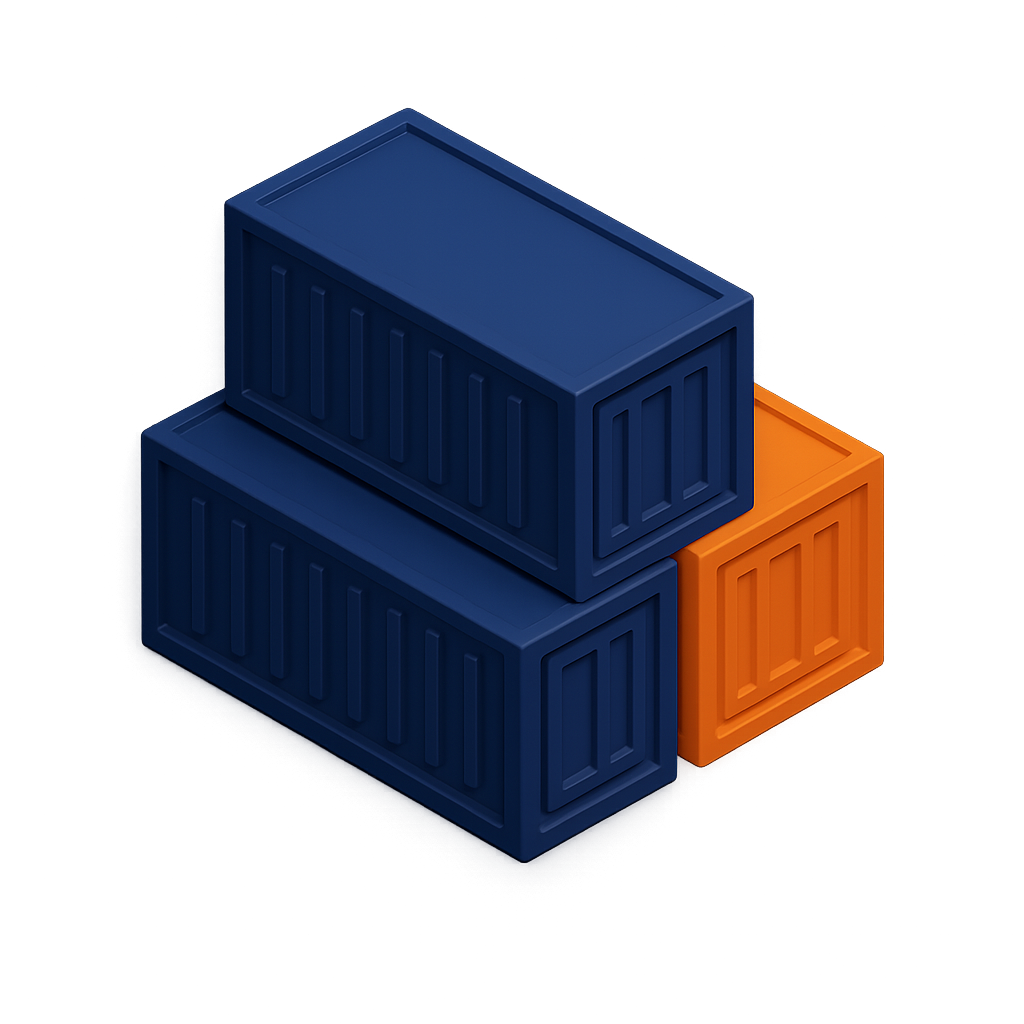5 Things to Know Before Buying a Shipping Container

Introduction
So, you’re thinking about buying a shipping container? Whether it’s for storage, building a home office, or launching a container café, making the right purchase can save you money and headaches down the road.
But not all containers are created equal.
Before you sign on the dotted line, let’s walk through the 5 essential things you should know to make a smart, confident purchase.
1. Decide Between New vs. Used Containers
Pros and Cons of New Containers
New containers—also called “one-trippers”—have only been used once, usually to ship goods from the manufacturer.
Pros:
- Pristine condition
- Longer lifespan
- Easier to modify
- Minimal maintenance
Cons:
- Higher upfront cost
- Limited availability in some regions
When Used Containers Make Sense
Used containers are budget-friendly and widely available in various grades (Wind & Water Tight, Cargo Worthy, As-Is).
Perfect for:
- Temporary storage
- Construction sites
- Projects where looks don’t matter
2. Choose the Right Size and Type
Standard Sizes: 20ft vs. 40ft
- 20ft Container: Easier to transport, fits in tight spaces, holds about a 1–2 bedroom home’s contents.
- 40ft Container: Offers nearly double the space, better cost per cubic foot, but needs more space to deliver.
Specialty Types: High Cube, Reefer, Open-Top
- High Cube: 1 ft taller, great for insulation and vertical storage
- Reefer: Temperature-controlled for food or medical use
- Open-Top / Side-Open: Easy access for oversized items
Your choice depends on your project and site limitations.
3. Understand Delivery Logistics
Site Access and Space Requirements
Before purchasing, ask yourself:
- Do I have enough room for delivery trucks to access the site?
- Is the ground level and firm enough to support the container?
You’ll typically need double the container length in straight clearance for delivery.
Delivery Methods: Tilt-Bed vs. Crane
- Tilt-bed delivery: Most common and cost-effective
- Crane delivery: Needed in tight or urban environments
At First Choice Shipping Containers, we help you assess your site before delivery so there are no surprises.
4. Inspect the Container Before You Buy
What to Check: Doors, Floors, Rust, and Seals
- Doors should swing freely and lock securely
- Floors should be solid, not soft or water-damaged
- Rust is okay on the surface, but avoid deep pitting or holes
- Seals and gaskets should be intact to prevent leaks
Ask for Photos or In-Person Viewings
Can’t inspect in person? Ask the seller for high-resolution photos from all angles and request close-ups of any problem areas.
5. Work with a Trusted Seller
Certifications and Warranties
Reputable sellers offer:
- CSC plates for shipping
- Inspection reports
- Warranty options (even on used units)
Why Reputation Matters
A good seller ensures:
- Clear communication
- Transparent pricing
- On-time delivery
- Safe and secure containers
At First Choice Shipping Containers, we pride ourselves on honesty, quality, and nationwide delivery options.
Conclusion
Buying a shipping container is more than just picking a box and calling it a day. It’s about knowing:
- Whether you need new or used
- What size and type fit your purpose
- How to plan for delivery
- What to inspect before buying
- Who to trust with your money
Keep these five things in mind, and you’ll not only get a container—you’ll get the right one for your needs.
Need help? Contact us today and we’ll walk you through every step.
FAQs
1. How long do shipping containers last?
New containers can last 20–25 years with proper care. Used ones typically last 10–15 years depending on condition.
2. Can I use a container for a tiny home?
Absolutely. Many people convert containers into homes, studios, and even Airbnbs.
3. Do I need a foundation for my container?
Yes—containers should be placed on a level, dry surface like concrete pads, railroad ties, or gravel.
4. How much does delivery cost?
Depends on your location, access, and container size. Get a quote based on your zip code.
5. What’s the difference between cargo-worthy and wind/water-tight?
- Cargo-worthy: Meets shipping standards and structural integrity
- Wind & Water Tight (WWT): Not for shipping, but safe for dry storage

